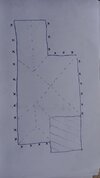Hi all,
I had my bungalow re-roofed in the spring. It has breathable membrane. However, I noticed when I was up there recently messing about with the insulation that the timbers felt a little damp in places. Not soaked, but just a bit damp. I also noticed a couple of small areas where the membrane had a bit of damp on it and not to do with moisture coming in from the outside. There is plenty of insulation up there but it isn't in contact with the membrane, or not significantly so, meaning I don't think this is the problem.
It is possible that this moisture was caused by me being up there for ten hours with the loft hatch open the entire time, and humidity coming up from inside the house, however, as a precaution, I am thinking to install those 70mm round soffit vents around the house. Perhaps one every metre, to help move air around up there and complement the breathable membrane.
Question: is there any reason why I should not do this? Is it possible to have too much ventilation and cause problems that way?
Thanks!
I had my bungalow re-roofed in the spring. It has breathable membrane. However, I noticed when I was up there recently messing about with the insulation that the timbers felt a little damp in places. Not soaked, but just a bit damp. I also noticed a couple of small areas where the membrane had a bit of damp on it and not to do with moisture coming in from the outside. There is plenty of insulation up there but it isn't in contact with the membrane, or not significantly so, meaning I don't think this is the problem.
It is possible that this moisture was caused by me being up there for ten hours with the loft hatch open the entire time, and humidity coming up from inside the house, however, as a precaution, I am thinking to install those 70mm round soffit vents around the house. Perhaps one every metre, to help move air around up there and complement the breathable membrane.
Question: is there any reason why I should not do this? Is it possible to have too much ventilation and cause problems that way?
Thanks!
Last edited:


